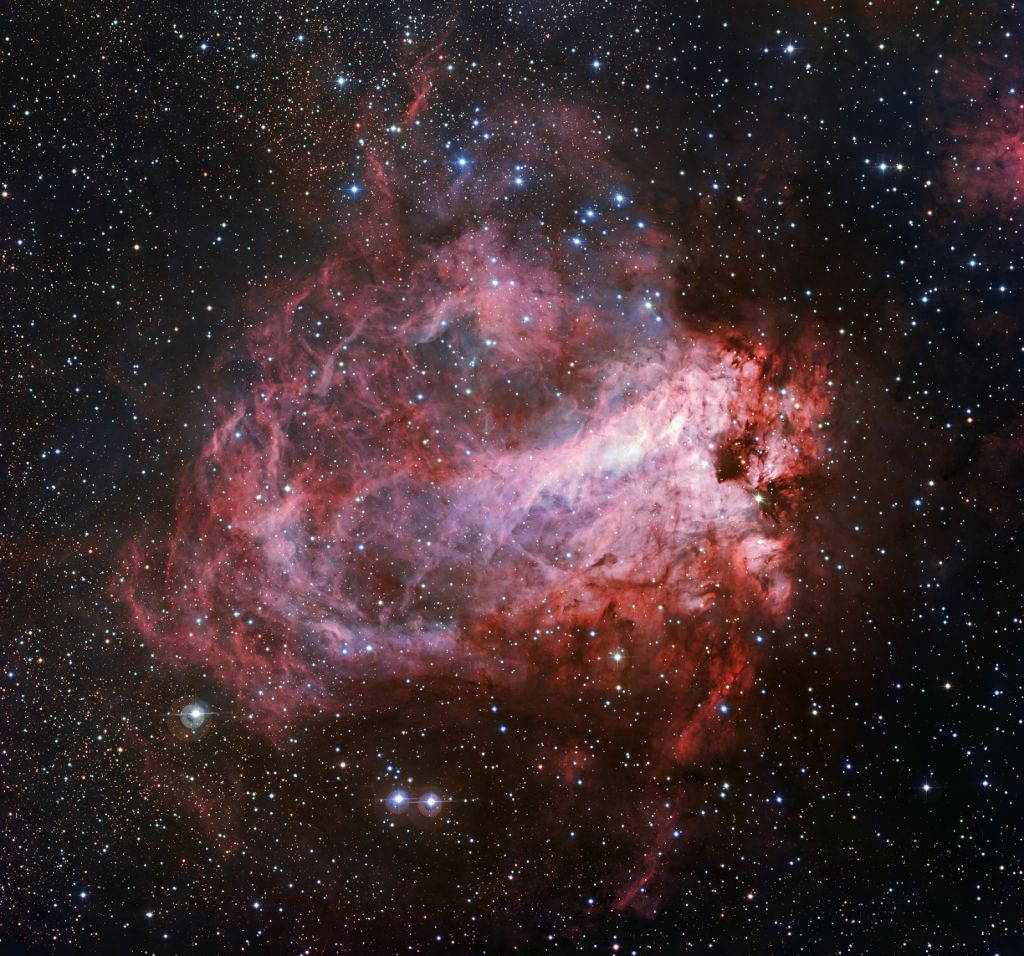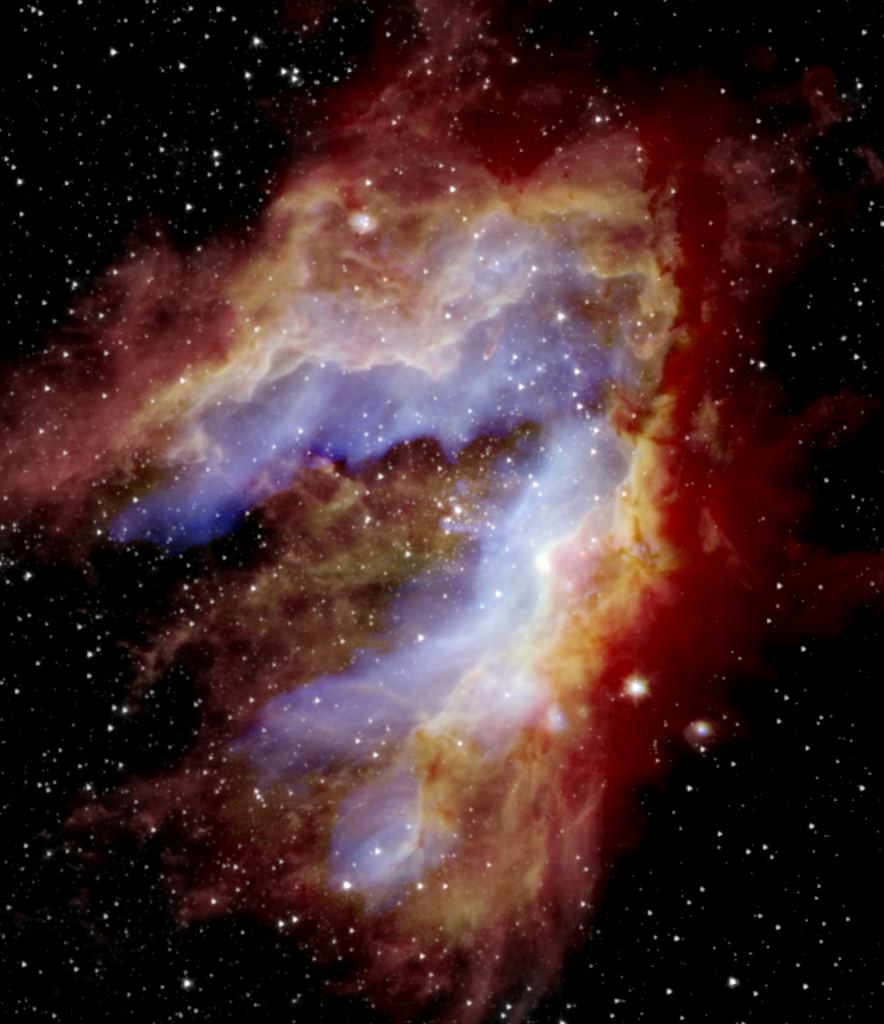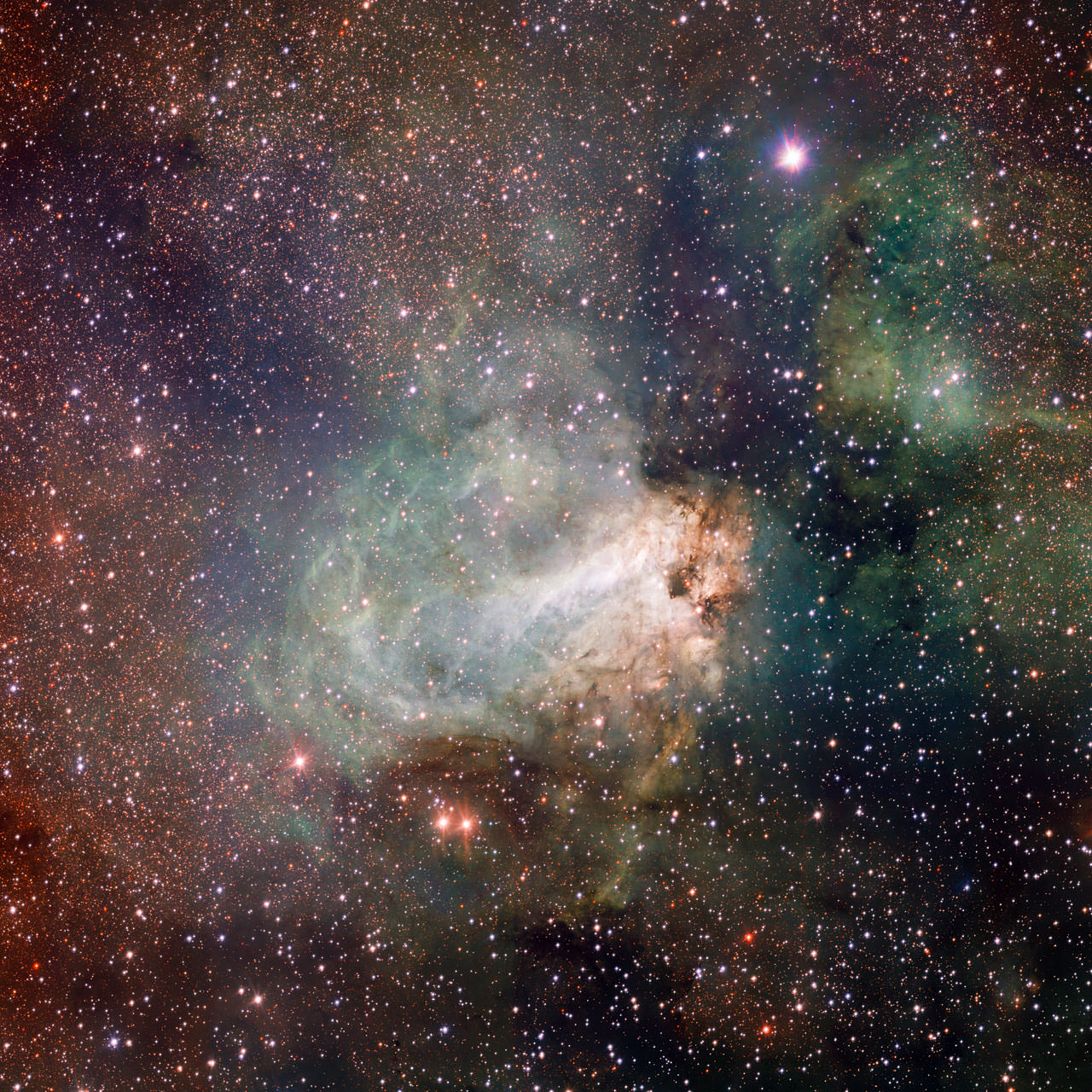The Omega Nebula (Messier 17), also known as the Swan Nebula because of its distinct appearance, is one of the most well-known nebulas in our galaxy. Located about 5,500 light-years from Earth in the constellation Sagittarius, this nebula is also one of the brightest and most massive star-forming regions in the Milky Way. Unfortunately, nebulas are very difficult to study because of the way their clouds of dust and gas obscure their interiors.
For this reason, astronomers are forced to examine nebulas in the non-visible wavelength to get a better idea of their makeup. Using the Stratospheric Observatory for Infrared Astronomy (SOFIA), a team of NASA scientists recently observed the Swan Nebula in the infrared wavelength. What they found has revealed a great deal about how this nebula and stellar nursery evolved over time.
To be clear, studying star-forming nebulas like M17 is no simple task. For starters, it is largely composed of hot hydrogen gas that is illuminated by the hottest stars housed inside of it. However, its brightest stars can be difficult to see directly because they are housed within cocoons of dense gas and dust. Its central region is also very bright, to the point that images captured in visible light wavelengths become oversaturated.

As such, this nebula and the youngest stars that live deep inside of it have to be observed in the infrared wavelength. To do this, the research team relied on the Faint Object Infrared Camera for the SOFIA Telescope (FORCAST), which is part of the joint NASA/DLR SOFIA telescope. This telescope is housed aboard a modified Boeing 747SP aircraft that routinely flies it to an altitude of 11600 to 13700 m (38,000 to 45,000 ft) to make observations.
This altitude places SOFIA in Earth’s stratosphere, where it is subject to 99% less atmospheric interference than ground-based telescopes. As Wanggi Lim, a Universities Space Research Association (USRA) scientist with the SOFIA Science Center at NASA’s Ames Research Center, explained:
“The present-day nebula holds the secrets that reveal its past; we just need to be able to uncover them. SOFIA lets us do this, so we can understand why the nebula looks the way it does today.”
Thanks to SOFIA’s FORCAST instrument, the team was able to pierce the veil of the Swan Nebula to reveal nine previously-unknown protostars – areas where the nebula’s cloud that are collapsing to create new stars. In addition, the team calculated the ages of the nebula’s different regions and determined that they didn’t all form at once, but through multiple generations of star formation.
The central region, since it is the oldest and most evolved, is believed to have formed first, followed by the northern area and southern regions, respectively. They also noted that while the northern area is older than the southern region, the radiation and stellar winds from previous generations of stars disrupted the material there, thus preventing it from collapsing to form the next generation of stars.
These observations constitute a breakthrough for astronomers, who have been trying to learn more about the stars inside of the Swan Nebula for decades. As Jim De Buizer, a senior scientist also at the SOFIA Science Center, conveyed, put it:
“This is the most detailed view of the nebula we have ever had at these wavelengths. It’s the first time we can see some of its youngest, massive stars, and start to truly understand how it evolved into the iconic nebula we see today.”
Essentially, massive stars (like the ones found in the Swan Nebula) release so much energy that they can affect the evolution of entire galaxies. However, only 1% of all stars are this enormous, which means that astronomers have very few opportunities to study them. And while infrared surveys have been made of this nebula before using space telescopes, none of them revealed the same level of detail as SOFIA.

The composite image above showcases what SOFIA captured, along with data from the Herschel and Spitzer Space Telescope that show the red gas at its edges (red) and the white starfield, respectively. These included regions of gas (shown in blue above) that are heated by massive stars located near the center and dust clouds (shown in green) that are warmed by existing massive stars and nearby newborn stars.
The observations are also significant seeing as how Spitzer, NASA’s premier infrared telescope for more than 16 years, is set to retire on Jan. 30th, 2020. In the meantime, SOFIA will continue to explore the Universe in the mid- and far-infrared wavelengths, which are not accessible to other telescopes. In the coming years, it will be joined by the James Webb Space Telescope (JWST) and the Wide-Field Infrared Survey Telescope (WFIRST).
By learning more about the makeup and evolution of nebulas, astronomers hope to better their understanding of star and planet formation, the chemical evolution of galaxies, and the role magnetic fields play in the cosmic evolution.
Further Reading: NASA

